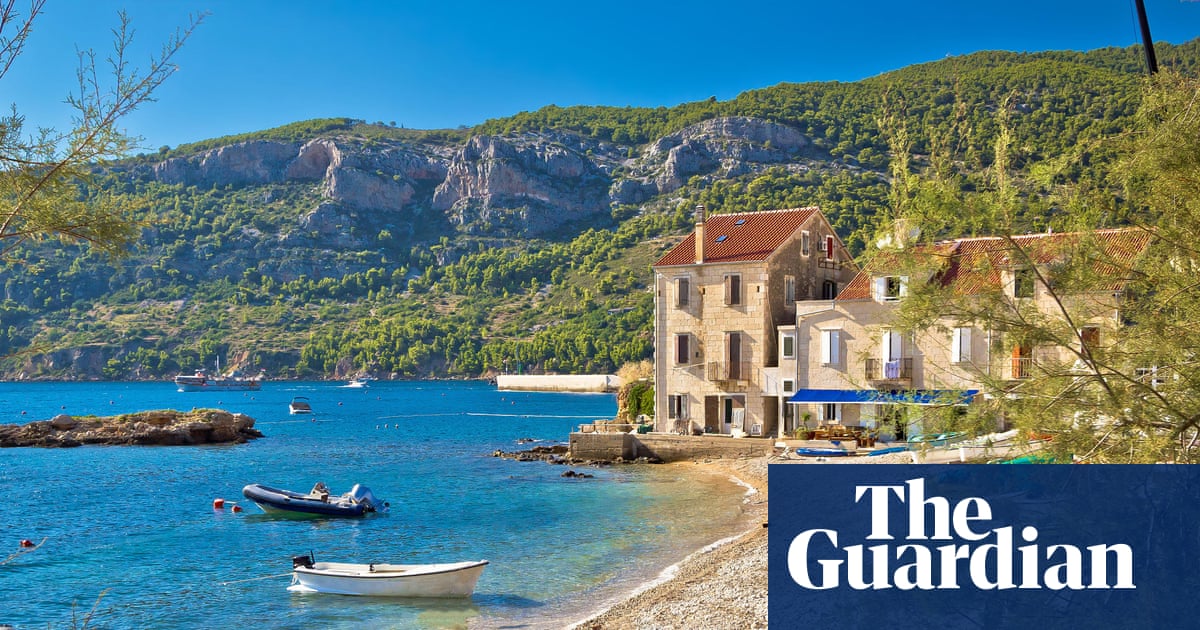I’m watching overtourism in action. Within the iridescent marvel that is Croatia’s Blue Cave, four boats holding about a dozen people each have an allotted 10 minutes before we motor back out again so that the next batch of visitors can float in. About 1,500 people a day visit this beautiful grotto on the island of Biševo, the biggest attraction within the Vis archipelago, two hours and 20 minutes south of Split by ferry. After paying the €24 entrance fee, I’m left underwhelmed by this maritime conveyor belt. At least the 45-minute foot ferry from Komiža, on the archipelago’s main island of Vis, to Biševo’s Mezoporat Bay, the launch point for boats to the Blue Cave, is only €4.
Many of the other cave visitors are on one of the countless speedboat tours departing from all over Dalmatia and crowding into Mezoporat Bay before whizzing off elsewhere. I’m staying on Vis itself to take a longer, slower, more satisfying look at the island, where I spent a night three years ago and which I’ve been hankering to revisit ever since. Despite the overwhelming popularity of the nearby Blue Cave and its speedboat tours, plus the boost in tourism on Vis after much of Mamma Mia! Here We Go Again was filmed here in 2017, I know there’s a quieter, mellower side to the island, and it doesn’t take long to find it.
‘Actively relaxing’ I find is a fitting description for this break
In sleepy Rukavac on Vis’s south-eastern coast, British couple Xania and Craig Wear welcome me into one of their four guest rooms in the large stone house they renovated after moving here 20 years ago. The former PE teachers run WearActive, offering yoga, kayaking, paddleboarding and cycling in Rukavac. On their seven-day, “relaxingly active” holidays you can do as much or as little as you like. “Actively relaxing”, I find, is just as fitting a description.
Xania serves delicious plant-based food on the large shaded terrace, which has views of the sea. But before breakfast we walk to the flat rocks of Bili Bok beach, where Craig puts me through my yoga paces. Clean, salty air fills my lungs as I lunge and stretch by the Adriatic. I follow this with a swim at nearby Srebrna beach. Late afternoons are spent lazing on the pebbles at Tepluš beach, 10 minutes’ walk from the house. I could get used to this.
The next morning, my hosts suggest kayaking 6 miles (10km) from Rukavac to Stiniva Bay, Vis’s most famous beach and a place of peerless beauty. Two giant limestone cliffs curve round the pebbly beach, nearly meeting in the middle. From the top of the hill behind the cliffs there’s a steep, rocky footpath to the beach, but it’s infinitely more enjoyable to paddle on to the beach, where only kayaks, paddleboards and small rubber dinghies are allowed. Craig is on a paddleboard, while Xania and I share a kayak, and my husband has a single kayak. At 8.30am there are only about four people here, and we have a blissful, peaceful swim.
Craig knows I’ve always wanted to learn how to paddleboard, so on the way back to Rukavac we stop in tranquil Ruda bay. After some expert instruction, I’m on the board and paddling away, initial jitters soothed by the hypnotic motion of gliding on the water. Now I see what all the fuss is about.
Vis town comes alive at night, the restaurant terraces along the Venetian harbour buzzing in the summer warmth
Away from the water, my husband and I get to know Vis more intimately, crisscrossing its vineyard-covered interior and heading up and down its winding mountain roads. Its capital, Vis town, dozes during the day, most restaurants closing while the sailing crowd cruises. It comes alive at night, the restaurant terraces along the Venetian harbour buzzing in the summertime warmth.
Smaller Komiža is the place for lunch, with everything from cheap pizzerias to smart restaurants. Near Gusarica beach we find Konoba Jastožera, a restaurant built on stilts over the water, where lobster pots hold the restaurant’s speciality.It’s only when I hear the soundtrack to the Mamma Mia! films that I realise we’ve stumbled on one of the sequel’s filming locations, and instantly expect high prices and low quality. Wrong on both counts. As long as we don’t order lobster, it’s one of the most affordable restaurants we’ve seen so far, with two courses for €25. It’s not all money, money, money here.
For an island that was off limits to foreigners until 1989, when the Yugoslav army base here closed down, Vis seems to be taking its time in developing its tourism (Biševo’s Blue Cave aside). I spot a few military tours about, taking people to the huge network of tunnels and bunkers left behind by the army. I get a fascinating glimpse into 1944 Vis when I hike up to the collection of caves at the foot of Mount Hum, where future Yugoslav president Tito and his fellow partisans hid from the Nazis.
Then there’s the growth of active holiday companies bringing more people to the island, which Xania sees as a positive thing, even if it means more competition. “Vis would then become an island that’s known for its adventure holidays,” she says. “And then you have more people coming to do that kind of tourism.” I nod in agreement. The island’s natural rhythm – slow, unhurried – is one to be savoured, not raced through.
The trip was provided by WearActive, which offers seven-night active holidays from €1,590pp, including breakfast, four lunches, three dinners with wine, five days of activities, transfers to restaurants on four evenings and from Vis town ferry terminal
